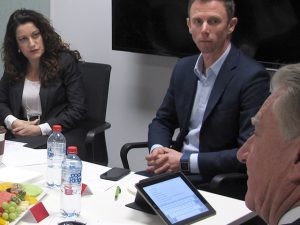Working out how much your advice is worth is a useful exercise, which has become even more pressing in the lead up to the start of the Life Insurance Framework (LIF).
In doing so, it is important to factor in all those things that go into the advice process, even if they don’t relate to a specific client, says Elixir Consulting’s Sue Viskovic.
As Sue writes, working out what your advice is worth is as crucial as figuring out how to provide that advice.
As we head toward the countdown to January 1st, you’re probably crunching your numbers to minimise the impact of the LIF on your revenues. If you haven’t already done so, an analysis of how much revenue you need to generate to service each ‘style’ of client you work with is an important step, before deciding how you will generate that revenue (if commissions won’t suffice, likely subsidising them with a fee). I refer to it in my book as determining your ‘Minimum Recoverable Amount’ (MRA).
A critical step in working out how you’re going to price your services in future is to analyse your processes – both your onboarding process AND your ongoing services, in order to determine your MRA. There are a number of tools you can use to do this, and if you’re choosing to use a spreadsheet rather than our full Pricing Advice online program, I want to share a few of my hacks to keep in mind while you’re doing it.
Make sure that when you’re considering how much time you spend with your clients, you also build into your charge-out rate all of those things you do that aren’t attributed to a single client through the advice process.
First, recognise the difference between income for effort, i.e for your salary, and profit. Regardless of how you choose to pay yourself for your own tax planning purposes, make sure that you factor in a market-based salary for the advisers who work in the business. If it’s just you, think about what you would have to pay someone to do your job if you weren’t able to … and then your targeted profit margin sits above that. I’ve seen some calculate their cost to serve as a break-even point – what would it take just to cover your overheads. The problem with doing that is you may subconsciously revert back to this as your minimum number, and if you’re not making a profit, you’re unlikely to still be in business when your clients need you in future if they need to make a claim. If you’re targeting say 35% profit margin, this should be calculated over and above your salary.
Make sure that when you’re considering how much time you spend with your clients, you also build into your charge-out rate all of those things you do that aren’t attributed to a single client through the advice process. They’re all necessary for you to do your job, but they’re not one-on-one with your client…
- CPD – whether it’s attending conferences or doing online learning, it’s all time that you’re not delivering advice to a client
- Updating knowledge on product changes and legislative updates
- Upgrade and maintenance of software
- Staff management
- Marketing/Prospecting
- Unsuccessful applications (or introductions)
- Client communications/education/engagement
- Travel time
And, of course claims – how will you factor in the time you spend assisting clients with claims, if you’re not going to charge for this service explicitly?
If you’re not a risk specialist, do the exercise separately for when you provide risk advice when it’s stand-alone, risk-only advice, or when it’s included in your comprehensive advice. Start your analysis on your ‘typical’ risk client, run through your whole process and crunch your numbers. Then consider if you’re working with a couple – some of the initial meetings, and data-gathering can be done jointly, and then just the underwriting is done separately on each soul insured… so servicing a couple may not be double the cost of servicing a single.
And, of course you wouldn’t just double that if you’re also delivering wealth, investment, cashflow – other elements of advice – because your data gathering process will be used across all elements – you don’t do this twice.
When you deliver your comprehensive offer, you’ll start with your onboarding process for every client, then for those that require insurance advice as well, you’ll add the extra elements – time spent running quotes, sourcing the best provider, then completing the risk applications and supporting the client through the underwriting process.
Don’t forget to account for when you have a non-typical client – sometimes there’s no way of knowing how long it will take to get through underwriting, but your typical client might have, say, two existing policies to start with that require research…and for every additional policy a client has over that first two, you might add an extra amount to your minimum recoverable amount.

In Practice Management, Elixir Consulting shares strategies for building better advice businesses.
Sue Viskovic is the founder of national consulting business Elixir Consulting; a popular speaker; a business coach; and author of a number of books and programs designed for advisers.
An award-winning advocate for financial and risk advice and small business, Sue’s most recent achievements include her latest book Worth Paying For, which has become a lifeline for many advisers impacted by the LIF, and the fourth edition of the Adviser Pricing Models Research Report
Contact or follow the author: Website | Email | Twitter | Facebook | YouTube












